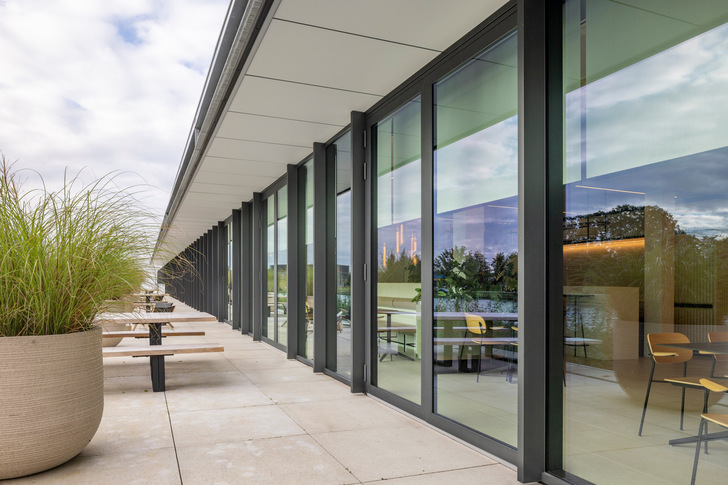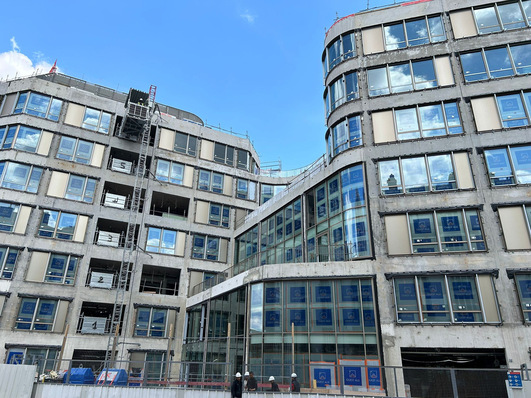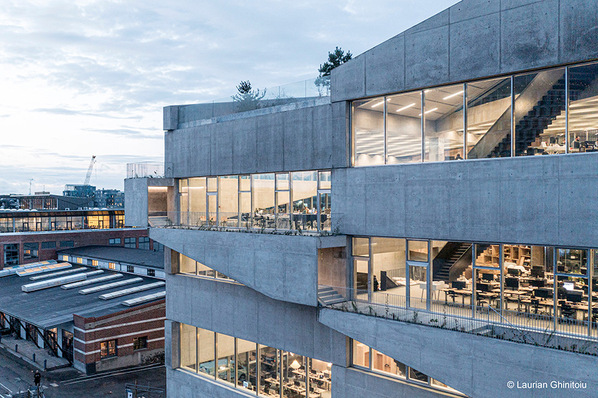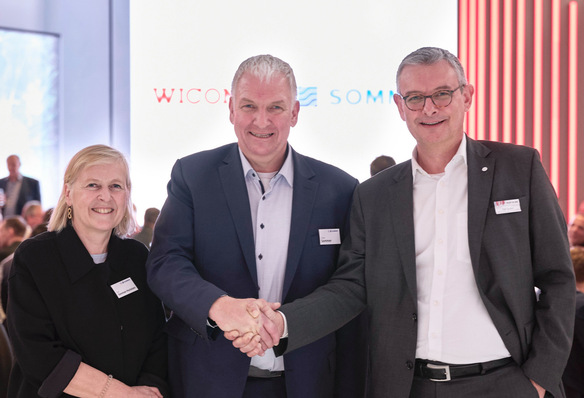Saint-Gobain Glass has been working for years to develop high light transmission with minimal solar energy input for many of its glasses. However, in addition to the selective properties of the facade glass, effective, translucent shading also plays a decisive role in the energy efficiency of a facade.
See also: A curved glass zero-carbon facade for the Kalifornia Malakoff office in Paris
The cooperation between the glass manufacturer and the Danish textile specialist Kvadrat Shade aims to harmonise sun shading glazing and internal sun shading in the best possible way.
Strong focus on the gtotal value
Under this system concept, the isolated consideration of the g-values of the glazing alone becomes less meaningful. Saint-Gobain Glass is therefore focussing more on the gtotal value (gtot).
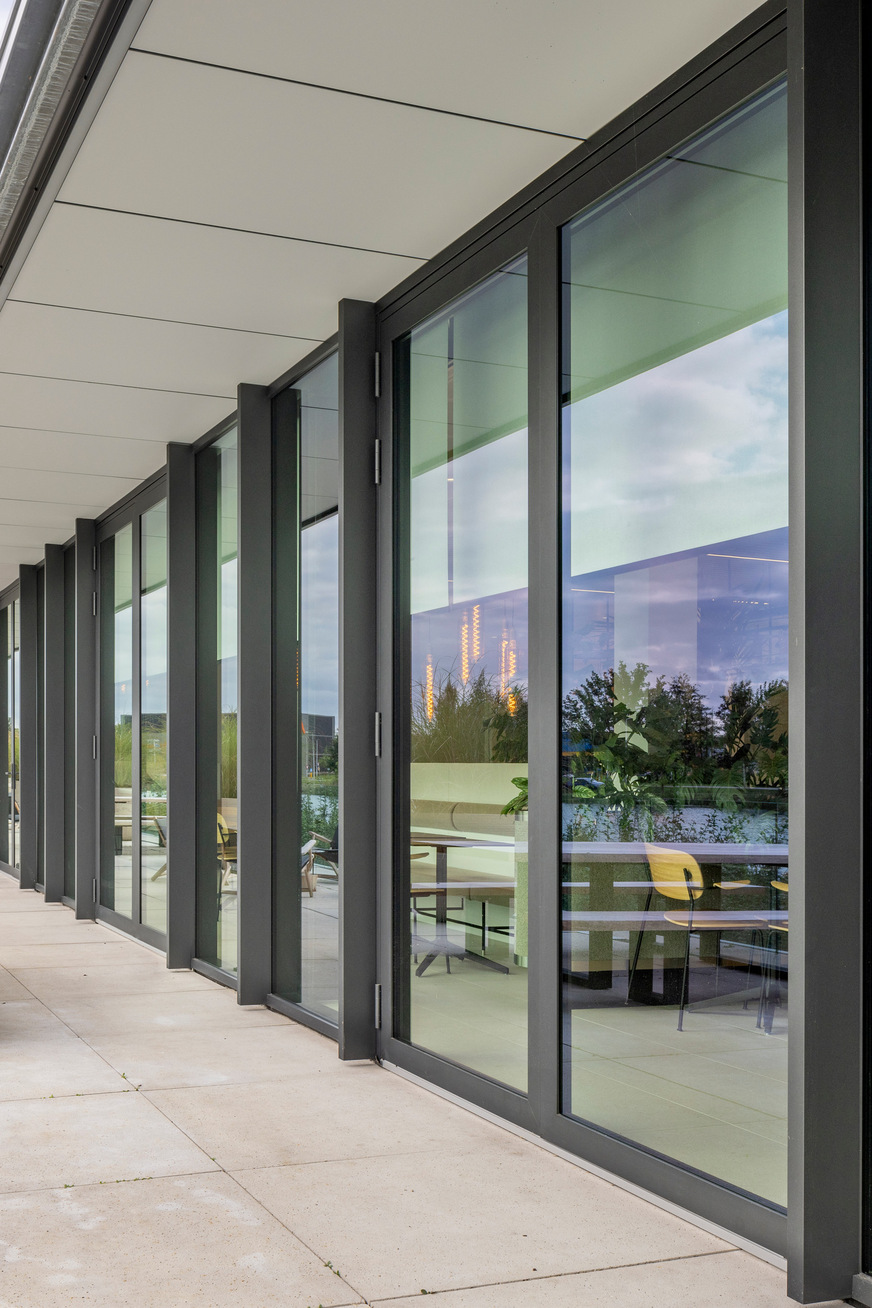
Kvadrat Shade / Wouter van der Sar Photography
This indicates the proportion of solar energy that effectively penetrates into the room through the combination of glass and solar control fabric. A lower gtotal value means a lower energy input and therefore a lower cooling load.
Efficient combination of glass and fabric
With Cool-Lite SKN and Cool-Lite Xtreme, Saint-Gobain Glass offers solar control glass with high selectivity. They filter out the majority of the infrared component from daylight, but allow visible light to pass through. This makes the room bright while minimising heat input. The low reflection of the Cool-Lite glass also ensures that some of the remaining heat is emitted to the outside.
With ‘Clearview’, Kvadrat Shade contributes a translucent solar control fabric that has a metallised surface to effectively reflect sunlight, especially the heat-intensive infrared component.
Effective energy values
An example of this effective combination: the DGU XTR 70/33 glazing from Saint-Gobain Glass achieves a gtotal value of 0.12 in conjunction with the Clearview 100 fabric from Kvadrat Shade.
Also interesting: Versatile slatted roofs enhance an already great rooftop bar
Just a few years ago, such a value would have been unthinkable for internal sun shading. At the same time, the U-value and the utilisation of sun shading and daylight are improved.
The result: a pleasant room climate with a balanced temperature, plenty of daylight without glare and improved air circulation. This cooperation raises the energy efficiency and comfort of buildings to a new level.







